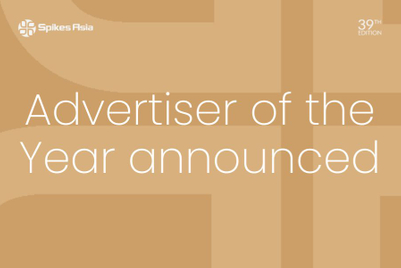
Recently the grand ad man Dave Trott gave a potted history of great advertising at the excellent ZeeMelt21 conference. This is a masterclass in what was the golden age of advertising as entertainment, and effective transformation.
Any strategist who is concerned with the role that TikTok will play in their 2022 plans would do well to start by going back and looking at the standout strategies of the past. Before you try to cut through in the metaverse, it is powerful to consider how cut-through worked in the world before computers.
One of the new studies from IPA Effectiveness Week this year also reminds us all that an old idea can be a great idea.
The report from Warc, developed in association with Royal Mail Marketreach, is an analysis of successful UK case studies that use direct mail. It takes a look at what direct mail can offer in today’s world, in the context of changing consumer behaviours post-Covid and technology innovations, and explores the best strategies for measuring the effectiveness of direct mail campaigns.
And some of the results might surprise. For instance, that including direct mail in the campaign mix will uplift results significantly. Or that digital natives welcome direct mail in the mix. We all “love” a Frankenstein word, and this report hails the rise of "phygital" (I know, I know). Those between the ages of 15 and 24 are most likely to trust direct mail (out of everyone surveyed). For people who are accustomed to interacting digitally, a physical invitation to buy proves both novel and effective.
There is much to be said too for recycling old ideas. Every hardened planner has the ideas that didn’t get through the selling process and get made. There’s a huge amount of effort that goes into generating new ideas for new briefs. But there is value in keeping a note of those ideas that didn’t quite make it, and seeing whether they have value in a new context.
This does not mean shoehorning an idea that does not fit. It isn’t time for the glass slipper to be forced on to the slightly less attractive sister’s foot. It does mean revisiting an idea that fell by the wayside and seeing whether it can be built on to satisfy a new brief, audience or tech platform.
There is a lot of rhetoric about the speed of change. However, fundamentally, nothing has changed. People are the same, human nature has not changed and we can produce great work only if we have true human insight for our professional target audiences (and for each other as team mates.)
In my ZeeMelt21 talk I spoke about evolution. Five hundred years ago, the amount of information and data the average person was likely to see in an entire year probably equates to, what, 60 minutes of scrolling through social media now. But our human brains just haven’t evolved that much in that time frame. Which is why we blank out and ignore nearly everything that we see and just retain the tiny amount that interests or entertains us.
Cutting through the clutter is more crucial as a skill than ever before for communication. A distinctive old idea, one that stirs us emotionally and triggers our memories, may well be a good place to start.

Sue Unerman is chief transformation officer at MediaCom


.jpg&h=334&w=500&q=100&v=20250320&c=1)
.jpg&h=334&w=500&q=100&v=20250320&c=1)

.png&h=334&w=500&q=100&v=20250320&c=1)

.png&h=334&w=500&q=100&v=20250320&c=1)

.jpg&h=334&w=500&q=100&v=20250320&c=1)


.jpg&h=268&w=401&q=100&v=20250320&c=1)


.jpg&h=268&w=401&q=100&v=20250320&c=1)


.png&h=268&w=401&q=100&v=20250320&c=1)
